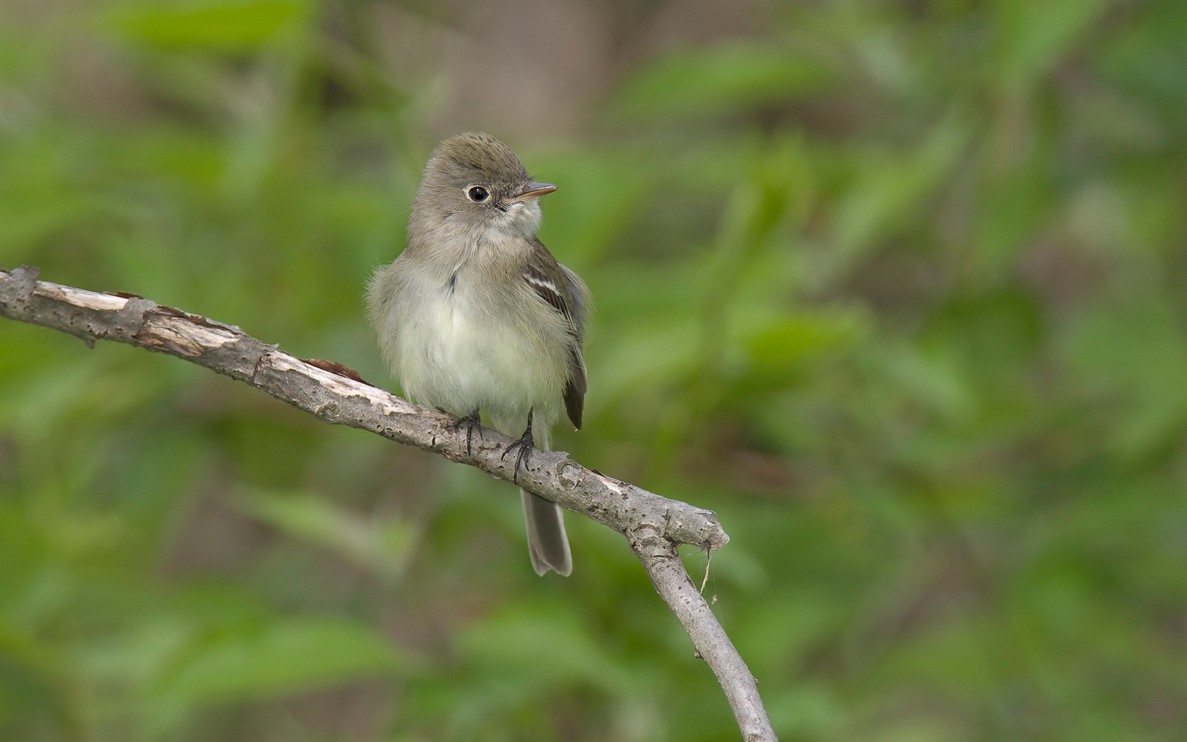Acadian Flycatcher
A species of Empidonax flycatchers Scientific name : Empidonax virescens Genus : Empidonax flycatchers
Acadian Flycatcher, A species of Empidonax flycatchers
Botanical name: Empidonax virescens
Genus: Empidonax flycatchers
Content
Description General Info
 Photo By William H. Majoros , used under CC-BY-SA-3.0 /Cropped and compressed from original
Photo By William H. Majoros , used under CC-BY-SA-3.0 /Cropped and compressed from original Description
Adults have olive upperparts, darker on the wings and tail, with whitish underparts; they have a white eye ring, white wing bars and a wide bill. The breast is washed with olive. The upper part of the bill is dark; the lower part is yellowish. This bird's song is an explosive peet-sa. The call is a soft peet. They also have a call similar to that of the northern flicker A unique two-note song described as "ka-zeep", and its location in its preferred habitat, are two features that help to identify this species. Measurements: Length: 5.5-5.9 in (14-15 cm) Weight: 0.4-0.5 oz (11.1-13.9 g) Wingspan: 8.7-9.1 in (22-23 cm) 
Size
15 cm
Colors
Black
Green
Bronze
Gray
White
Life Expectancy
12 years
Nest Placement
Tree
Clutch Size
2 - 3 eggs
Incubation Period
1 - 2 broods
Number of Broods
13 - 15 days
Nestling Period
12 - 18 days
Feeding Habits
Acadian Flycatcher primarily consumes insects and their larvae, capturing them beneath leaves during brief flights from perches in mid-level forest, or hawking them mid-air.
Habitat
Acadian Flycatcher primarily inhabits deciduous forests and is closely associated with mature, undisturbed woodlands. Preferring areas like ravines, swampy woods, and beech groves, acadian Flycatcher thrives at low altitudes in areas with dense vegetation near water sources such as streams and river bottoms. They exhibit sensitivity to habitat fragmentation and favor larger tracts of continuous forest. During migration, acadian Flycatcher may utilize more open wooded areas, but in their wintering range, they seek understory thickets within secondary growth and primary tropical forests.
Nest Behavior
Acadian Flycatchers begin nest building in late spring to early summer. The species exhibits typical clutch sizes of 2-4 eggs, with both parents participating in incubation and chick rearing, demonstrating a cooperative approach to parental care.
Nest Characteristics
Acadian Flycatcher's nest is a small hammock-like structure situated in a horizontal fork on a drooping branch, 10-30 meters high. Made of spiderwebs, cocoon silk, bark strips, twigs, and grasses, it features distinctive hanging streamers of plant fibers and twigs.
Dite type
Insectivorous
General Info
Feeding Habits
Bird food type
Bird Feeder Type

Platform
Sounds
Call
Recording location: Mexico
Call
Recording location: Panama
Song
Recording location: United States
Behavior
Acadian Flycatcher predominantly reside in the forest midstory, engaging in sally flights to capture insects beneath foliage from their perches. At dawn, males animate the early hours with abrupt, forceful songs while choosing dead over live branches for visibility. Their singing wanes as daylight progresses. Females appraise nesting locations within the male's turf, with pair bonding leading to nest construction. These birds exhibit a monogamous and territorial nature, actively repelling male intruders. Seasonally, acadian Flycatcher migrate to Central and South America, displaying site fidelity to both breeding and wintering grounds annually.
Distribution Area
Its breeding habitat is deciduous forests, often near water, across the eastern United States and southwestern Ontario. These birds migrate through eastern Mexico and the Caribbean to southern Central America and the very northwest of South America in Colombia, western Venezuela, and Ecuador. The numbers of these birds have declined somewhat in the southern parts of their range. Brown-headed cowbirds lay eggs in the nests of these birds in some areas. However, only 16% of cowbird young in Acadian flycatcher nests fledge successfully. They wait on a perch in the middle of a tree and fly out to catch insects in flight (hawking), also sometimes picking insects from foliage while hovering (gleaning). They may eat some berries and seeds. They make a loose cup nest in a horizontal fork in a tree or shrub. The Acadian flycatcher is an excellent flier; it is extremely maneuverable, can hover, and can even fly backward. Curiously, there is no scientific information on hopping or walking by this bird. As of October 2015 there have been 2 records of Acadian flycatcher in Europe, the first being a bird found dead in Iceland in 1967, and the second a bird found on the beach at Dungeness in Kent, England in September 2015, the latter's identity being established by DNA from its droppings. 
Species Status
Not globally threatened.
Scientific Classification
Phylum
Chordates Class
Birds Order
Perching birds Family
Tyrant flycatchers Genus
Empidonax flycatchers Species
Acadian Flycatcher